Summer 2005
Summer 2005 |
|||||||
|
|
|||||||
Thirteen New Titles from Esri Press |
|
|
The new lineup of spring 2005 books from Esri Press comprises an ambitious and diverse selection of titles from Esri's publishing group. Featuring the thoughts of some of the world's leading experts in GIS, the new list tackles topics across a wide range of applications and subject areas, establishing Esri Press as the leading publisher of GIS and cartography titles worldwide. 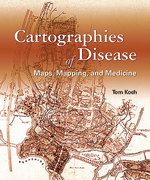 In Cartographies of Disease: Maps, Mapping, and Medicine, bioethicist, gerontologist, medical geographer, and author Tom Koch presents a comprehensive survey of the technology of mapping and its relationship to the battle against disease, advancing the radical argument that maps are not merely representations of spatial realities but a way of thinking about the relationships between viral and bacterial communities, human hosts, and the environments in which diseases flourish. New threats arise with alarming regularity, for example, bird flu, Marburg virus, and severe acute respiratory syndrome (SARS). For public health professionals worldwide in search of strategies for dealing with these contagious agents, it is imperative to understand the geographic patterns formed by the path of disease. 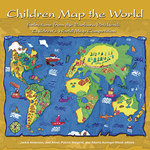 Children Map the World: Selections from the Barbara Petchenik Children's World Map Competition presents a collection of 100 stunning reproductions of map-inspired artworks by children. The images are culled from the entries over the first decade of an annual competition sponsored by the International Cartographic Association. In the words of the editors, "It is a stimulating collection of children's work, maps that reveal core values in surprisingly subtle and complex expressions. The messages embedded in the maps are sometimes complex and culturally unfamiliar. Yet the maps are accessible and inspirational to us all." 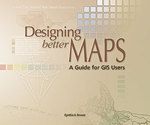 In a groundbreaking new book, noted cartographer and GIS expert Cynthia Brewer teaches in no-nonsense terms how to design powerful map layouts suited to whatever the ultimate mapping goal. Designing Better Maps: A Guide for GIS Users, breaks down the myriad of decisions about color, font, and symbology that must be made correctly to create maps that effectively communicate the message intended by the mapmaker. Poorly designed maps are not just hard on the eyes, they can actually convey misinformation and result in poor decision making. The author demystifies the basics of good cartography, walking the reader through layout design, scales and north arrows, projections, color selection, font choices, and symbol placement. Recognizing the need for integration with other publishing and design programs, the text also covers various export options. The creation of publication-worthy maps is the goal. A technical appendix describes the author's popular Color Brewer application, an online tool designed to help people select good color schemes for maps and other graphics. 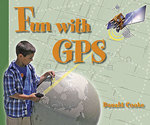 Focusing on the lighter aspects of geospatial technology, Fun with GPS delivers what the title promises. Based on his vast personal experience as a GPS enthusiast, GIS industry legend Donald Cooke shows how these ubiquitous little devices—when properly integrated with some kind of mapping software—can provide endless entertainment and useful information. In dozens of illustrated examples, Cooke shows how GPS devices can be attached to just about anything (or anyone), including runners, race cars, sailboats, windsurfers, hockey players, wild animals, and household pets. He even describes how users can track themselves on a map in real time flying across the country! Cooke advocates that GPS technology in the classroom reinforces science, math, and geography curricula; provides groundwork for project-based learning; and shows students that their schoolwork is important and relevant. 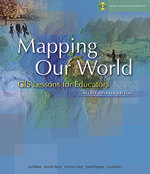 Mapping Our World: GIS Lessons for Educators (ArcView edition) was the 2003 winner of the prestigious Geography Excellence in Media Award from the National Council for Geographic Education. Like its predecessor, the new Mapping Our World: GIS Lessons for Educators (ArcGIS Desktop edition) is a complete resource for any teacher seeking a way to bring GIS technology into the middle school or high school classroom. It is designed for teachers and students new to GIS as well as experienced users. The CDs with the book include all the data to complete the lessons and a one-year trial version of ArcView 9. 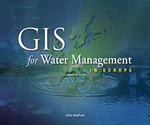 On the European continent, nations already geographically unified are becoming even more closely aligned in other ways: administratively, politically, and economically. Nowhere are these alliances more clearly defined than in connection with the issue of freshwater resources in Europe. GIS for Water Management in Europe shows the many imaginative ways that European organizations, agencies, and governments are using GIS technology to bring unity to a diverse group of problems. Author Mike Bedford shows how drinking-water distribution, flood control, and pollution mitigation constitute only a few of the challenges facing Europeans that are being tackled with GIS-based analytical, visualization, and data management tools. 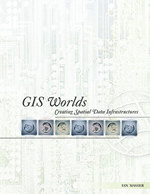 As the world's governments increasingly come to terms with the fact that geospatial technologies must be a central component of their national information systems, the need for standards and uniformly accepted ways of storing and sharing geographic information has never been greater. In GIS Worlds: Creating Spatial Data Infrastructures, author Ian Masser, one of the world's leading thinkers on the subject, describes the emergence of the spatial data infrastructure (SDI) phenomenon and shows the relative diffusion and evolution of SDIs around the world. Masser explores the implementation of SDIs from a practical perspective and outlines a method of institution building for regional, continental, and global SDIs. This timely and important title promises to strengthen even further the need for intelligent governance and strong leadership in the GIS and spatial data communities. 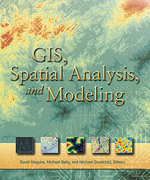 GIS, Spatial Analysis, and Modeling is an anthology of new papers from some of the leading thinkers and innovators in the GIS world. The text serves as a snapshot in time of the state of the art (circa 2005) in GIS-based spatial analysis and modeling software applications. Editors David Maguire, Micheal Batty, and Micheal Goodchild show just how far geoanalytical methods and tools have progressed in recent years. The numerous real-world examples describe an interesting range of socioeconomic and environmental applications. GIS Tutorial: Workbook for ArcView 9 is a revolutionary new teaching tool designed with both self-study users and classroom students in mind. 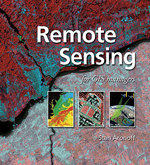 From satellite images of the ozone layer to radar readings of the ocean floor to high-resolution aerial photography, the use of remote-sensing technology as a primary data source for GIS is mushrooming. In Remote Sensing for GIS Managers, author Stan Aronoff covers such topics as aerial photography, multispectral scanners, thermal infrared, radar, lidar, and sonar in ways that make sense for GIS professionals attempting to utilize this rich and increasingly affordable data source. The book is well illustrated and contains examples of a wide range of earth resource applications, such as agriculture, forestry, geology, meteorology, urban infrastructure, and wildlife management. 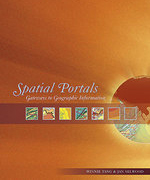 The idea of a spatial portal—a new type of Web site designed to serve as a kind of "air traffic controller" for geographic information-is revolutionizing the way GIS professionals manage, find, share, and use knowledge, from the local level to the world stage. In Spatial Portals: Gateways to Geographic Information, authors Winnie Tang and Jan Selwood present a thorough overview of this evolving phenomenon and convincingly summarize the opportunities, developments, challenges, and issues that are now impacting the way today's GIS systems are being designed, developed, and managed. 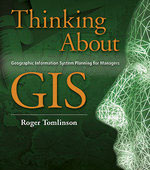 Packed with planning wisdom from Dr. Roger Tomlinson, the man who is commonly referred to as the "father of GIS," Thinking About GIS: Geographic Information System Planning for Managers (newly released in paperback) details a practical method for implementing a geographic information system, one that has been proven successful over many years of use in public- and private-sector organizations. In this revised edition, Tomlinson has updated the work with the latest performance benchmarks and revised certain other sections. 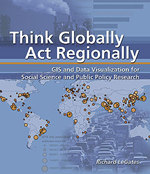 In Think Globally, Act Regionally: GIS and Data Visualization for Social Science and Public Policy Research, author Richard LeGates argues that location and spatial relationships are important dimensions in all the real-world concerns of social scientists and public policy professionals, but social scientists and public policy professionals—other than geographers—often neglect the spatial aspect of phenomena. This book encourages students to apply what they learn in solving problems. Combining real-world examples with hands-on GIS exercises, this volume will serve well in many social science and public policy courses. Visit www.esri.com/esripress for the availability dates of these books, ordering information, and a listing of additional titles available. |